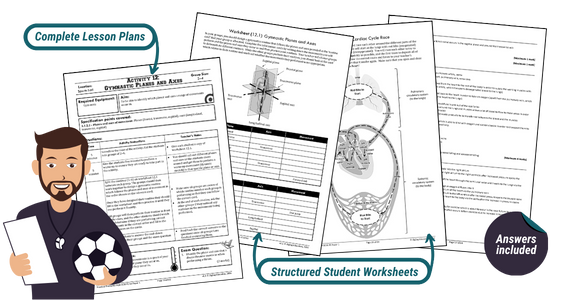Practical Theory for GCSE AQA PE
Putting the PHYSICAL back in to Physical Education!
16–19 carefully selected practical activities to engage and familiarise students in the theory content for both papers of the AQA GCSE PE specification.
Gives a ‘fresh’ way of teaching...
...Pupils work on skills such as communication, teamwork, leadership in addition to being active
Each practical activity is great for kinaesthetic learners and contains:
- Relevant and concise aims – link practical activities to essential specification content.
- Cool-down questions – encourage detailed understanding and assessment of learning.
- Exam-style questions – provide focus at the end of each session.
Versatile... Complete in the sports hall, outside or on the athletics track!

What do teachers say about this resource? (7062)
It gives a ‘fresh’ way of teaching what some pupils find a very difficult theoretical element of the GCSE course. The supportive worksheets will provide the basis of written evidence of learning and act as a revision tool for pupils, or a basis for more extension work to lead on from. Pupils work on other skills such as communication, teamwork, leadership in addition to being active. Peer assessment is being used in many of the activities. I can see some of my own pupils gaining a great deal from doing some of the activities.
This has been a game changer for us in terms of practical lessons. We have always wanted to teach the theory through practicals but never had enough time to put resources together which support the spec. Every single lesson is different, engaging, enjoyable and specific to the AQA spec. The pupils are fully engaged with the lesson due to the practical element and are sometimes unaware that they are learning theory through these lessons! We constantly have to remind them (which is a good sign!). It is there to pick up and use! Hugely enjoyable due to the different nature and activities in each lesson. Planning for each lesson is minimal due to the resources itself being fully detailed. Challenges pupils, and teachers, thinking.
PE attracts practical/kinaesthetic people, so this will appeal to their preferred way if learning. It is something completely different to the norm, and so will provide a number of students with the hook they need to recall information.
Keywords
- GCSE Physical Education
- GCSE PE
- GCSE AQA Physical Education (8582)
- AQA PE resources
- 3.1 The human body and movement in physical activity and sport
- Applied anatomy and physiology
- Movement analysis
- Physical training
- Use of data
- GCSE PE Practical Theory
- 3.2 Socio-cultural influences and well-being in physical activity and sport
- Sports psychology
- Socio-cultural influences
- Health, fitness and well-being